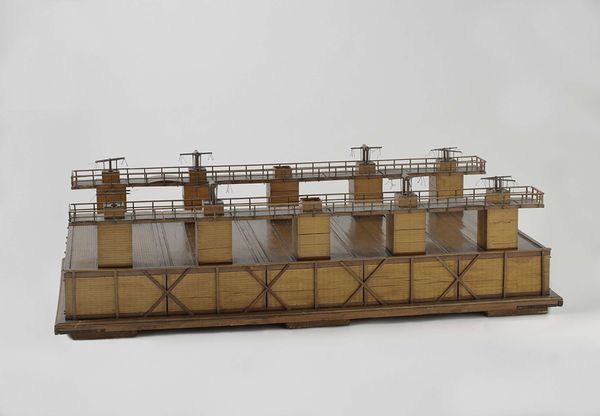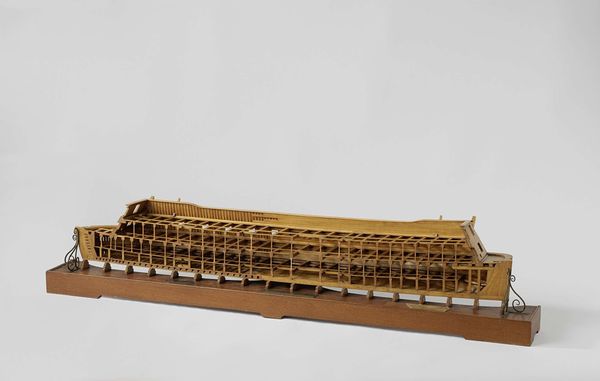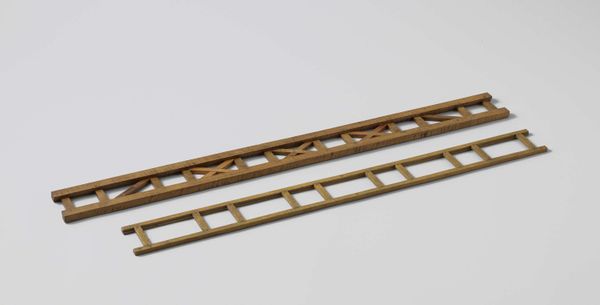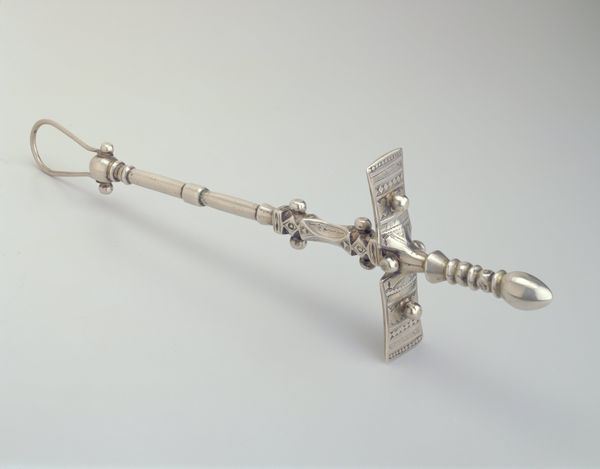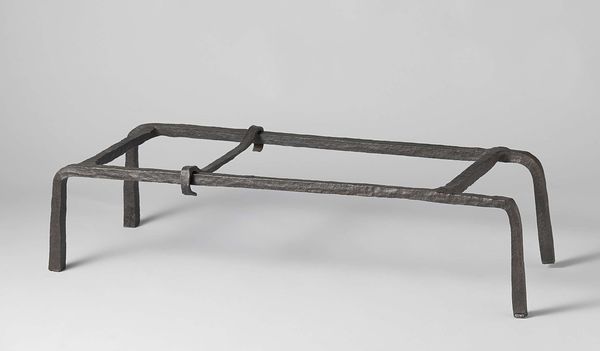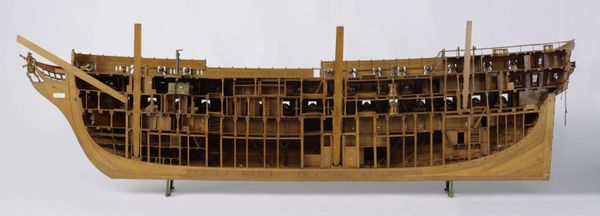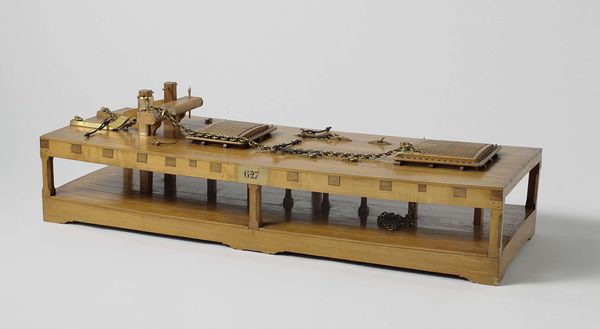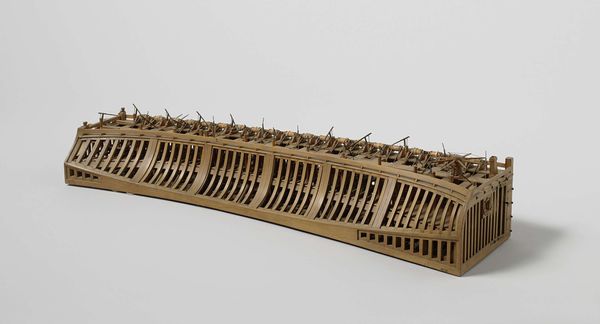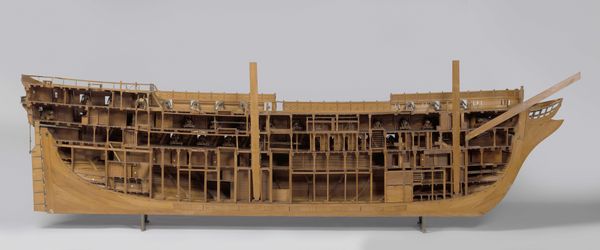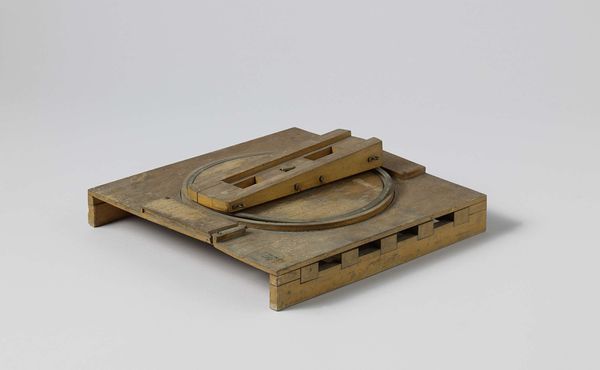
sculpture, wood, architecture
#
architectural and planning render
#
neoclacissism
#
architectural modelling rendering
#
architectural plan
#
architecture mock-up
#
sculpture
#
architect
#
architectural render
#
architecture model
#
architectural drawing
#
wood
#
architectural proposal
#
prototype of a building
#
architecture
Dimensions: height 27 cm, width 239.5 cm, depth 37 cm
Copyright: Rijks Museum: Open Domain
Editor: So, this is the "Model of a Pontoon Bridge" from 1821, an anonymous work, made of wood. It's interesting, it feels almost like a stage set, meticulously crafted but strangely devoid of people. What do you make of it? Curator: It's less about "what" and more about "how" and "why." Think of the labor involved in creating this detailed wooden model. Each component, precisely cut and assembled. What was the social standing of the people who made this and other pontoon bridges? Who were the likely users? These temporary, mobile structures directly influenced accessibility of waterways, thus directly impacted economies. The access could drastically shape the production and exchange of commodities across regions. Editor: I hadn’t considered the social context of its creation so deeply. Was it common to produce these detailed models at the time? Curator: Absolutely. These models weren’t just pretty objects; they were crucial tools for communicating engineering designs. How does its creation as a prototype influence your view? It demonstrates a society that is becoming invested in mass transport. What were the costs and social implications for the pontoon bridges in society at the time? Who benefitted and who may have lost access due to implementation or construction of these? Editor: It seems to represent not only the bridge itself but also a microcosm of societal access. It also serves as a stark reminder of resources needed to design it, create it and then build the functional form! I appreciate seeing it with fresh eyes now, less as a static object and more as a historical record. Curator: Precisely. This piece speaks volumes about the social and material conditions that enabled its very existence.
Comments
No comments
Be the first to comment and join the conversation on the ultimate creative platform.
